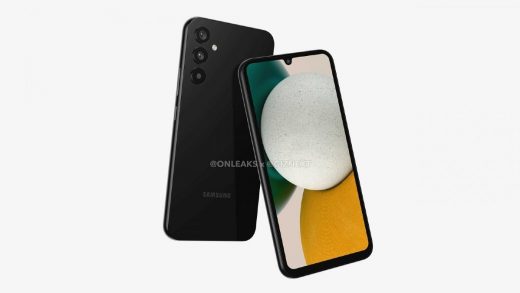:format(webp)/https://www.thestar.com/content/dam/thestar/entertainment/stage/2022/12/15/can-christmas-shopping-be-viewed-as-a-form-of-theatre-well-sort-of/rl_christmaswindow_07.jpg)
The Eaton Centre in December: you either love it or you hate it.
As a person prone to getting lost in the mall’s sprawling tunnels, I belong to the second camp. But golly, do I love a holiday window display. The lights, the colours, the textures. The positioning of the mannequins just so. The artful draping of fabrics and posters and ribbons. Yes, indeed, even raging capitalism can have moments of beauty.
Christmas shopping is often a chore. But it’s kind of like an immersive theatre experience, isn’t it? Someone has designed exactly how you’ll manoeuvre the retail space, just like a theatre director. Someone has positioned the lights just so. Someone’s sat down with a colour wheel to figure out what will look best; what will capture your attention; what will make you spend more money at Christmastime. That’s not so different from a theatrical set or lighting designer, right?
It’s one of those thought experiments that’s haunted me since obtaining my theatre degrees: are the things we do in day-to-day life really just a string of mini-performances? And, on the other hand, what sorts of applications are there for theatre training beyond the marquees of Mirvish Way?
In an attempt to quell these nagging questions, I spoke with experts in immersive theatre, set design and retail analysis. I was cheered to learn I’m right: there’s an intrinsic relationship between theatre design and those eye-catching displays you see around Christmastime. Thought experiment over.
Well, sort of. As with most things, it’s not that simple.
Toronto set designer Michelle Tracey loved to check out the Christmas window displays at Hudson’s Bay growing up — and clocked early on that set designers must have had a role in bringing the colourful vignettes to life.
“I remember thinking they were clearly done by set designers,” she said in an interview.
While Tracey says colours like red and green aren’t intrinsically psychosomatic — seeing red is unlikely to make you spend more money on its own — designers across fields use contrast to divert an audience (or consumer’s) gaze.
“When I’m designing, I’m thinking a lot about what’s going to pop onstage,” she said. “I’m constantly finding things that have a reflective quality, sparkle, luminosity. Red is a strong colour, but what’s interesting for me is creating a reaction, or a focal point, by using red’s contrast to other colours.”
Bruce Winder, a retail analyst and adviser, said that, yes, holiday merchandising can influence consumer behaviour; it’s part of why companies spend so much around Christmastime on extra labour and decorations.
“Retailers try to make it easy for you by classifying and categorizing and organizing the store,” he said.
“But it depends on the retailer. If you’re Walmart, you’re all about the lowest price. If you’re Lululemon, it’s less about the price and more about the experience, or getting that great gift for yourself or a loved one.”
Winder also spoke about the planning that goes into designing the flow of a brick-and-mortar store: the path an ideal customer will follow before leaving the space. You don’t want customers to get bogged down and give up, nor do you want your cash line to be so long that guests flee. The physical path of your intended shopper — or audience — must be planned with finesse and intention.
Theatre director Mitchell Cushman used those ideas of retail mapping in his immersive show “The Tape Escape,” which used a former Queen Video storefront in the Annex as the site for a hybrid escape-room-slash-play in 2019. If you weren’t seeing the show, you could walk by the space and think it was a totally normal Queen Video store. In short: the lines between retail and theatre were blurred.
Theatre company Outside the March “has done a number of shows where we’ve tried to premise it on thinking about audience experience from end to end. And I think that could mirror retail experience,” Cushman said in an interview. Cushman thinks there’s potential for more crossover between the retail space and tenets of theatrical design, but both fields still have room to grow with regards to the intentional use of space.
“I don’t know that your average retail experience thinks about it that deeply, just like I think a lot of theatre experiences might not deeply consider it. But the opportunity is there in both cases.”
Tracey is on board with the idea that there’s significant overlap between a holiday department store merchandising plan and a theatrical set design — at the least, there’s synergy between both industries’ use of colour, light and texture.
“Stores use every trick in the book to try and dazzle you, and keep you interested and grab your attention,” she said. “In theatre we use those tricks too, creating interesting compositions, using principles of design to get people’s attention.
“Of course, ‘to delight’ isn’t always our primary goal in theatre, where it might be in retail,” she continued. “Sometimes we want to put people in a darker place or build intrigue. But I think both theatre and retail work a lot with first impressions: how do designers set up an environment or expectation, and then what happens when you subvert it?”
Outside of visual design, Winder and Cushman agree: whether you’re making a new play or a retail schema, music is key.
For a 2016 project set in a funeral home, “TomorrowLove,” Cushman worked with a sound designer to figure out how sound and music “could operate like wallpaper” to affect the audience’s mood at either end of the experience.
On the other hand, “music can make it easier for customers to shop,” according to Winder. He said music often plays a part in the overall esthetic of holiday shopping, joining the ranks of elf ears and bright displays.
Cushman believes that music plays a role in both types of experiences, but often switches between working on a conscious as opposed to a subconscious level. In “TomorrowLove,” music contributed to an “uncanny experience” — a world that felt “oddly familiar” but unable to be defined.
The director and the analyst agree: no matter where you wander, be it at a department store or through an immersive play, esthetics matter. Music and physical blocking can change the timbre of the things we do, be it onstage or off.
For Cushman, the biggest overlap between the two is in manipulation of gaze: how both a director and a merchandiser might subliminally guide a person’s attention to a specific point.
For Talk Is Free Theatre’s immersive “Sweeney Todd,” “we created different signals where the audience would know where to look,” he said. “And it was free-form enough that there was no wrong place to put your gaze … but we picked out the most dominant moments sonically. So you’re thinking about all the range of ways you can direct the audience’s attention when you need to.
“It’s like that in a retail store. There’s writing to divert your gaze. There’s thousands of things to look at, but some specific things the store is trying to move. So they’ve organized the architecture and the lighting of the space to draw your gaze to it, if less dynamically than in a theatre. In a traditional retail experience, the things you engage with are fixed while you move; in immersive theatre, the audience moves and the things they engage with move, too.”
Bet you’ll never look at a Christmas display the same way again, huh?
JOIN THE CONVERSATION



